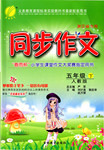题目内容
Girls really prefer pink and boys prefer blue, recent research shows.
The reasons could have its origins in the hunt for food on the African savannah(稀树草原) thousands of years ago. Evolution may have developed women’s preference for pink, perhaps because it helped to find ripe fruit and healthy men with reddish faces, while both men and women have a natural desire for blue, according to scientists at
“ Everyone in today’s western culture, from parents to toy manufactures, seems to assume that little girls like pink.” Said Prof. Anya Hulbert, who wanted to find out whether the reason was cultural or to do with biology.
A love of salmon, fuchsia and coral does seem to be rooted into females, rather than picked up from their mothers.
The participants in the study were Chinese and British. The Chinese students showed a marked preference for red, “ Culture may contribute to this natural female preference,” said Pro. Hulbert.
In her experience, 208 young adult men and women were asked to select, as rapidly as possible, their preferred color. Hulbert and her colleague Dr. Yazhu Ling marked the results and found that while men preferred blue, women tended to choose pink.
Hulbert said she could only prefer about the preference for blue: “ Here again, I would favor evolutionary arguments. Going back to our savannah days, we would have a natural preference for a clear blue sky, because it signaled good weather. Clear blue also signals a good water source.”
51. The passage mentions “ the African savannah” to show that_____.
A. the ancient Africa was a a beautiful place
B. human beings lived in Africa at first
C. women and men have different color preference
D. color preference has its historical origins
52. It can be inferred that the underlined word “ fuchsia”_____.
A. is probably a kind of toy
B. is probably pink in color
C. can be only found in Africa
D. hardly causes men’s interest
53. By saying “ the Chinese students for red.” In Para. 5, the writer means_____.
A. red is the Chinese students’ favorite color
B. the Chinese prefer red more than the British
C. culture influences people’s color preferences
D. the study was carried out by two nations
54. What can we know from the last paragraph?
A. Hulbert thinks evolution explains why people prefer blue.
B. Hulbert has a strong desire for “savannah days”.
C. Blue is a natural signal of many good things
D. While boys like blue, girls like pink.
本文主要讲女孩喜欢粉色,男孩喜欢蓝色。这种法是有根据的。研究表明,这种想象源于古代人类的生活习惯。
51. D
解析:考查写作意图。第一段提出主题,第二段提及非洲稀树草原,其目的是告诉读者男女分别偏爱某种颜色是有其历史的原因的。
52. B
解析:考查词义猜测。根据本文的主题,结合本句的内容,可知作者提及 “salmon, fuchsia and coral” 的原因是因为它们的颜色都是粉色的。A love of salmon, fuchsia and coral does seem to be rooted into females, rather than picked from their mothers.对于大马哈鱼,倒挂金钟花及珊瑚的喜爱似乎婶婶扎在女性的心里,而这种爱好并不只是从她们的妈妈那里继承的。
53. C
解析:考查事实细节。根据该段的结论句“ Culture may contribute to this natural female preference ”可知。
54. A
解析:考查主旨大意。从最后一段中Hulbert所说的话可知她的观点是人们都喜欢蓝色的原因是进化的结果。

 春雨教育同步作文系列答案
春雨教育同步作文系列答案In the Harry Potter films, Hermione Granger is better than her male friends and is considered the brightest pupil in her grade. Isn’t it often the same in schools of our real world?
“It’s surprising but true that most of the top students have been girls since primary school. Girls are class leaders, club presidents and the top ones in exams,” said Wang Feixuan, 15, who studies at a Chengdu school. By any measure, Wang herself is a high-achiever. She is a top student, a team leader in her school’s sports club and a winner in national English and IT competitions.
But why do so many girls outperform their male peers?
In Sun Yunxiao’s latest book Save Our Boys, he points out that the education system is “more suited to girls, who are good at memorizing and like to sit quietly and read.” Yet he also says that girls have to do so much more when they compete with males for honors, top universities and later good jobs. They can feel great pressure nearly every day.
This seems to be the same in most countries in the world. Young women in the United States are also reported to feel the same pressure to be perfect.
“Let’s look at what we ask of our teenage girls,” says Professor Stephen Hinshaw in an interview. He thinks that it’s no longer enough that a girl does well in school and is a caring friend. On the TV, on the Internet and everywhere, girls see images of impossible perfection.
Today’s young women must be good learners, good athletes, and fill their after-school lives with other activities. But they are also asked to have the styles and looks of popular stars. “Be pretty, sweet and nice. Be athletic, competitive and get straight. Be impossibly perfect.” Stephen Hinshaw sums up.
1.The passage suggests that .
|
A.our society asks far too much of teenage girls |
|
B.teenage girls shouldn’t be so perfect at school |
|
C.boys are always lazy ones rather than girls |
|
D.American girls have less pressure than Chinese girls |
2. According to the passage, it is true that .
|
A.boys are less smart than girls throughout school life |
|
B.boys usually don’t have so much pressure as girls do |
|
C.girls are all fond of the Chinese education system |
|
D.girls are better at school because boys don’t work hard |
3.The underlined word “outperform” means .
|
A.hate |
B.misunderstand |
C.like |
D.defeat |
4.What is the best title for the passage?
|
A.Impossibly Perfect Is Possible. |
B.Why Are Girls So Perfect? |
|
C.Perfect? Pressure Every Day! |
D.Perfect: Boys or Girls? |